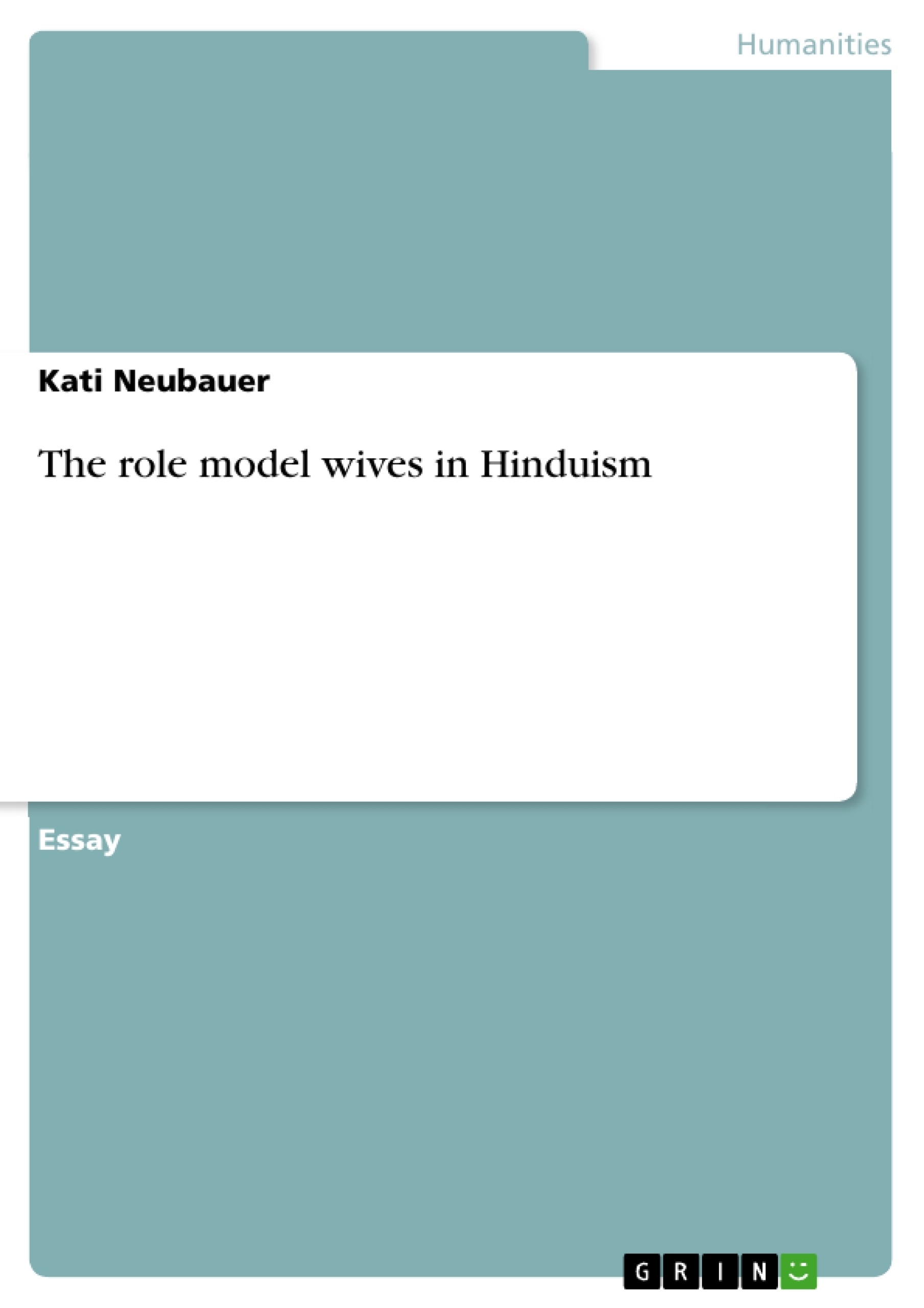In India clear expectations towards the behaviour of a woman in society exist. The role of a wife in marriage is not only culturally but also religiously defined. In Hinduism two role models are given: Rama’s wife Sita and Krishna’s mistress Radha. The Essay follows the question: How do Sita and Radha help explore the boundaries of wifely behaviour?
The role model wives in Hinduism
In India clear expectations towards the behaviour of a woman in society exist. The role of a wife in marriage is not only culturally but also religiously defined. In Hinduism two role models are given: Rama’s wife Sita and Krishna’s mistress Radha. A first distinction has to be made by having a closer look at the relationships between the mythological couples. While Rama and Sita are officially married to one another Radha is Krishna’s lover. In fact, she is already married to another man in her village, where she lives as a Gopi when she falls in love with Krishna. She follows him into the forest at night for a romance until he leaves the place he grew up and also leaves Radha behind to fulfil his destiny. While this love affair is mentioned in the texts of Puranas and Mahabharata the Hinduistic group Bengal Vaishnavas worships Radha as personified power of love of a god (Hladini-Shakti) (Kinsley, 89). She is understood by them to be the incarnation of the goddess Laxmi who is the wife of the god Vishnu. Krishna is an avatar of Vishnu on earth. In this understanding the bound of marriage between the two can be drawn and the relation be seen as a role model for marital devotion of the wife to her husband.[1] This Essay will discuss the pretensions towards a woman in a marital relationship with a man, and will discover primary values by analysing the two female role models.
Both relationships strongly emphasize the devotion of a woman towards a man. In the Ramayana, Sita is described as constantly concerned with her husband’s wellbeing, reputation, and will. In order to please him, she acts selflessly and sometimes even shows inability to operate since Rama didn’t confirm her action. Only one time Sita makes a decision herself and puts the norms of society above the word of her husband she immediately gets in trouble. By stepping outside the area restricted by her husband to give food to a hermit she gets captured by Ravana and causes trouble for her husband and even might disgrace him (Pattanaik 90, 1, e.g. Ramayana). But in her devotion to her husband she refuses to be rescued by Rama’s ally the monkey god Hanuman because on the one hand, she would have to touch another man and by that disgrace Rama and on the other hand, she would takes Rama’s chance away to free her in order to defend his dignity. Also, she claims she could defend herself by burning Ravana with the fire of her chastity but refuses since Rama didn’t approve this option (Kinsley, 73, e.g. Ramayana). Likewise the intensive relationship between Radha and Krishna is also seen as ideal, especially concerning the love of a woman towards a man. Radha leaves everything in the world behind to follow Krishna even though he still has affaires with other women. Her devotion seems to be selfless and not linked to worldly conditions. Both women, Sita and Radha, are always thinking about their mate first, and are almost unable to take action without considering the will of their partners. A principle in a male - female relationship is the selfless love of a woman towards a man, displayed in her obsessive concerns about him regardless of his own action towards her.
[...]
[1] The fact that Radha is married to somebody else is not explored in the sacred texts and theological attempts in India are made to interpret her relationship to Krishna as sacred as well.
- Citation du texte
- Kati Neubauer (Auteur), 2008, The role model wives in Hinduism, Munich, GRIN Verlag, https://www.grin.com/document/133371




